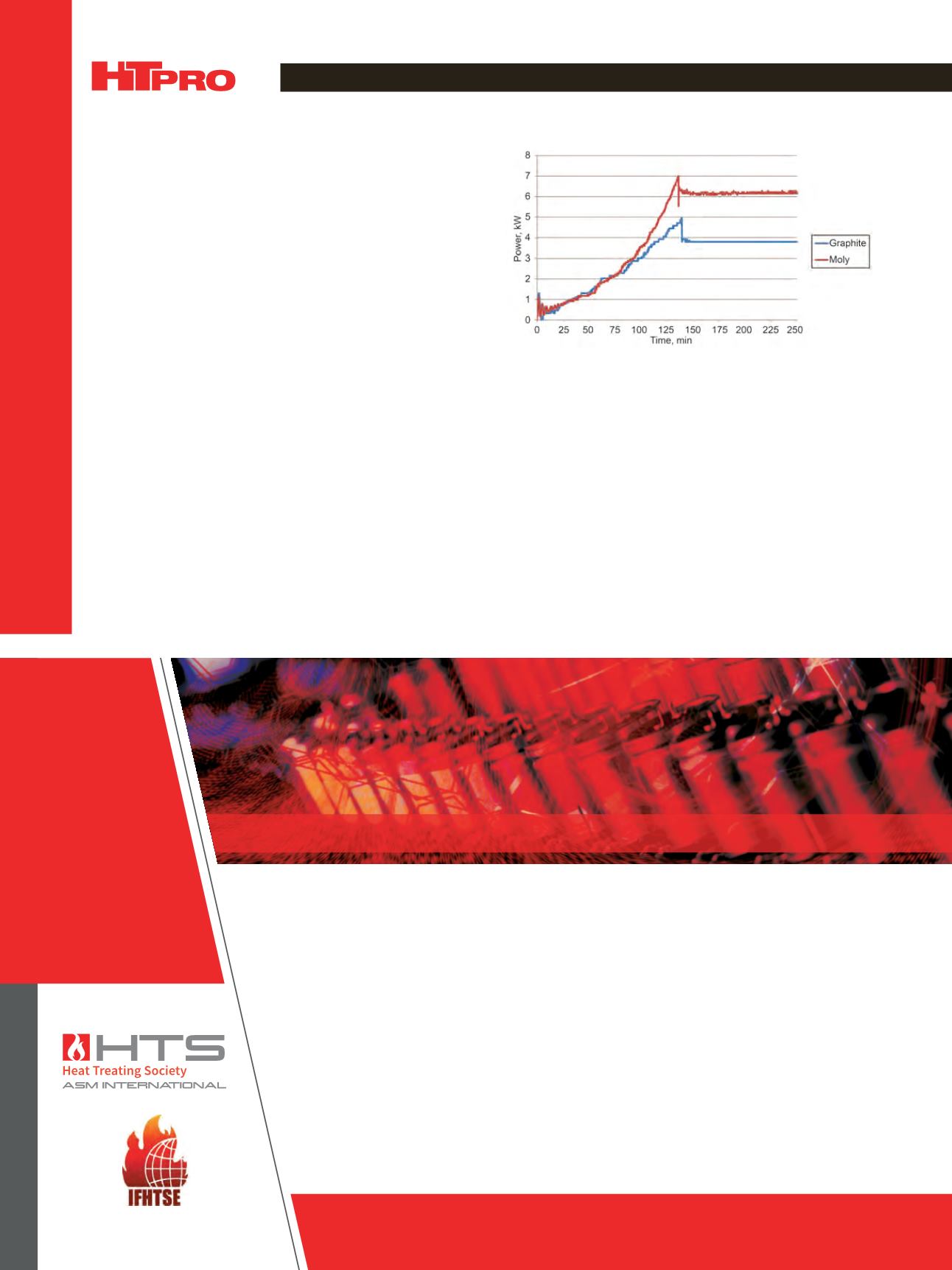

4 4
A D V A N C E D M A T E R I A L S & P R O C E S S E S | J U N E 2 0 1 5
FEATURE
Fig. 13 —
Plots of power consumption in furnaces with graphite
and all-metal hot zones heated to 2200
°
F and held for two hours
show that the graphite hot zone is about 30%more efficient.
with graphite, solvents, and diffusion pump oil. Graphite and
molybdenum hot zones can produce contamination-free
surfaces with proper techniques including clean work, low
leak rates, low initial pump down, and precycle bake-outs.
Molybdenum furnaces have inherently lower vacuum levels.
Graphite furnaces consume less power, require lower capital
investment, and have longer life. Graphite furnaces consume
30% less power than molybdenum, and those with molyb-
denum hot zones have a higher capital investment, shorter
life, and are more difficult to maintain.
This article is adapted from a presentation by Trevor
Jones at 2014 Furnaces North America.
For more information:
Reàl Fradette is senior consultant,
Solar Atmospheres Inc., 1969 Clearview Rd., Souderton, PA
18964,
rfradette@solaratm.com,
www.solaratm.com.
Raise the visibility of your work or company by presenting at the 23rd International Congress of Advanced Thermal Processing. Global experts will gather in Savannah, Georgia to present the latest innovations, research, and advances in composites, additivemanufacturing, tribology, and surface engineering. We’re nowaccepting papers on possible topic areas, such as: CALLINGALL AUTHORS! INTERNATIONAL FEDERATION FOR HEAT TREATMENT AND SURFACE ENGINEERING ’16 APRIL 18-22, 2016 | SAVANNAH, GEORGIA • Advances in Thermal Processing and Emerging Technologies • Thermo-chemical Treatment (Carburizing, Nitriding, Nitro-carburizing), including vacuumapplications of LowPressure and High Pressure Carburizing • Tribology andWear of Engineered Surfaces, including the nano-mechanical properties/behavior of surface engineered system • Computational Metallurgy andMaterials for newalloy design or performance • Finite Element Analysis (FEA) for prediction of stresses andmicrostructure in ferrous and non-ferrous materials • Computational Fluid Dynamics as applied to thermal processing, such as furnace design or quenchant uniformity • Thermal Processing of Ferrous and Non-Ferrous Alloys, and Superalloys • Thermo-Mechanical Simulation, Treatments and Implementation (Forging, Cutting, Forming, Shaping, Drawing), including Surface Engineering Visit asminternational.org/web/ifhtse for more information or to submit your abstract for consideration. ABSTRACT DEADLINE: SEPTEMBER30, 2015. 23 RD INTERNATIONAL CONGRESSOF ADVANCED THERMAL PROCESSING

















